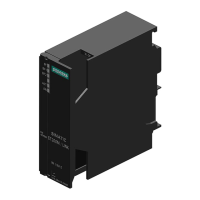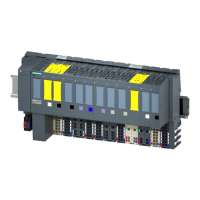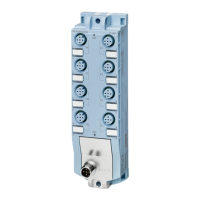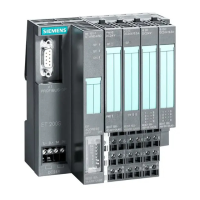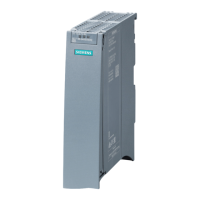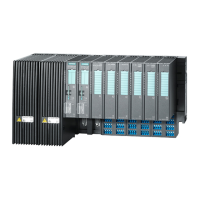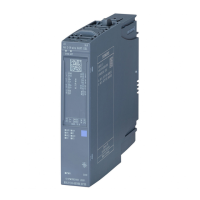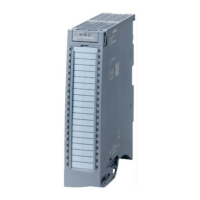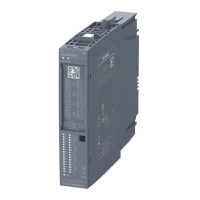Digital Electronic Modules
11-3
Distributed I/O System ET 200S
EWA 4NEB 780 6024-02 07
11.1 Parameters for Digital Electronic Modules
Parameters for Digital Input Modules
Table 11-1 Parameters for Digital Input Modules
2DI
4DI 4DI 2DI/ 4DI 24 VDC ST Value Default Applicabil-
24 VDC
High Fea-
ture
24 VDC
High Fea-
ture
24–48 VUC
High Fea-
ture
4DI 24 VDC/SRC
ST
Range ity
ture ture ture
2DI 120 VAC ST
2DI 230 VAC ST
Hardware interrupt
3
––– ––– Disable
Enable
Disable Module
--- Diagnostic
Interrupt
––– Disable
Enable
Disable Module
Input delay
1
––– ––– 0.1 ms
0.5 ms
3 ms
15 ms
3 ms Module
Diagnostics: Short circuit
to M
2
––– ––– Disable
Enable
Disable Module
--- Diagnostics:
Wire break
4
––– Disable
Enable
Disable Module
--- Diagnostics:
Fuse defect
––– Disable
Enable
Disable Module
--- Diagnostics:
Load volt-
age missing
––– Disable
Enable
Disable Module
Trigger for
hardware
Trigger for
hardware
––– ––– Disable
Enable
Disable Channel 0
interrupt,
rising edge
3
interrupt,
rising edge
3
Enable
Channel 1
––– Channel 2
Channel 3
1
The input delay applies to “0” to “1” and to “1” to “0”.
2
Short circuit of the sensor supply.
3
Can only be parameterized for the IM151-1 High Feature interface module and the IM151-7 CPU
4
If the wire break check is activated, all the unused inputs must be stabilized to prevent them from triggering
a module wire break. This can be accomplished by placing a resistor between the 24/48 V terminal
(3, 4, 7, 8) and the unused input. The resistor must provide at least 0.5 mA of input current (see “Sensor
Switching” in the table of technical specifications). This ensures that sufficient current is flowing to prevent
wire break detection.
A sensor must provide a minimum of 0.5 mA in the off state (otherwise a wire break is detected in the off
state). Alternatively, a resistor can be connected parallel to the sensor terminals (the current must be at
least 0.5 mA).
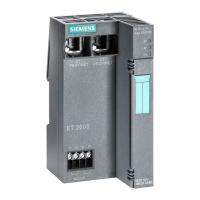
